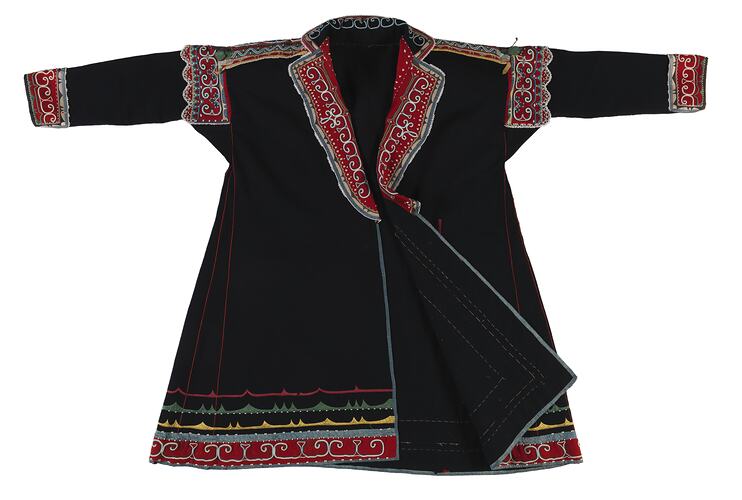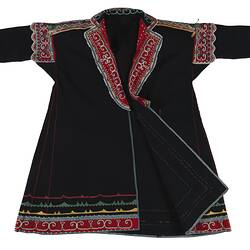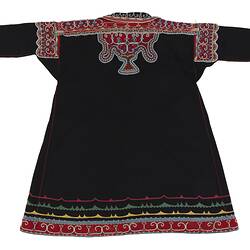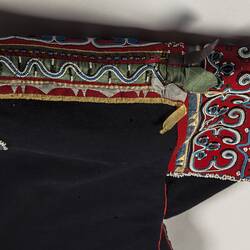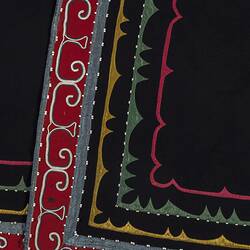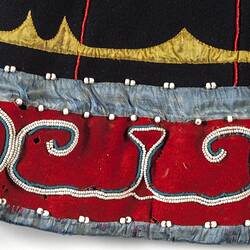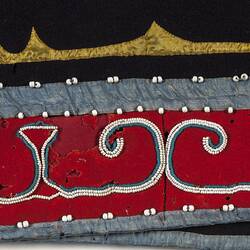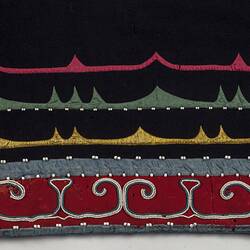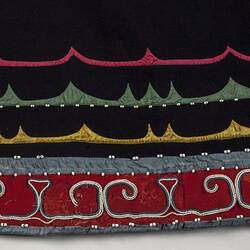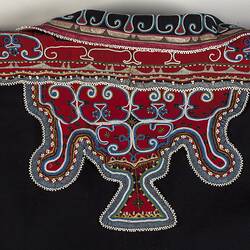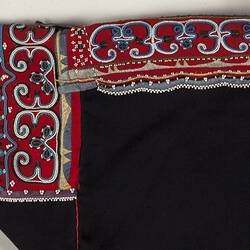Summary
This is a chief's coat traditionally worn on special ceremonial occasions. Over many years women added ornate designs using fine needlework to apply the silk ribbons and coloured glass beads in distinctive geometric and curvilinear designs. The beadwork and ribbon applique were also applied to the hems of these coats. Cloth garments are thought to have replaced leather ones sewn with sinews and trimmed with moose hair or decorated with porcupine quills, and their use was well-established by the late seventeenth and early eighteenth centuries. Glass beads and cloth had been highly popular as trade goods brought by the earliest European settlers in Canada, mainly fur traders, and buttons also appeared on these garments. However by the turn of the twentieth century, examples of beadwork were being made for the tourist market and highly sought as souvenirs.
Physical Description
A coat made of woollen cloth decorated with silk ribbon applique and glass beads.
Significance
The coats that were made for and worn by the Mi'kmaq Chiefs had a standing collar similar to the great coats of the French military. This is in fact thought to be the origins of this garment, particulalry seen in the straight cut and made to be worn at knee length. The use of the Fleur de Lis in this design also indicates a French influence. The shoulder blades feature an repetition of undulating patterns of soft curved motifs that denote a specific affiliation with North American Woodlands groups. The Mi'kmaq were well known for a particular T-shaped element in their work.
More Information
-
Object/Medium
Garment
-
Maker
-
Cultural Groups
-
Locality
-
Date Produced
-
Collector
-
Date Collected
-
Object Measurements
105 cm (Length), 154 cm (Width)
-
Keywords
-
References
[Catalogue] Davies, Suzanne. 2006. Threading the Commonwealth: textile tradition, culture, trade and politics.
-
Collection Names
-
Type of item
-
Discipline
-
Category
-
Collecting Areas
